Understanding Smoothie Basics
Before diving into the world of smoothies, it’s great to get a grasp on what goes into them and how the choice of ingredients and liquids impacts their texture and satiety level. I’ll share with you how I choose my smoothie components for the perfect blend of flavor and fullness.
Key Ingredients for Smoothies
When I’m putting together a smoothie, I always think about the balance of flavors and nutrients. The base typically includes fruits like bananas, berries, or apples; these not only add natural sweetness but also fiber, which helps in making the smoothie more satisfying. For a creamy texture, avocado is my go-to, plus it’s full of healthy fats. I don’t forget to toss in some vegetables for nutrition; spinach and kale are easy to mask with the sweetness of fruits.
To up the filling factor, I often include oats or chia seeds, which are great for fiber, or a scoop of protein powder. Here’s the short list of what I consider:
- Fruits: Bananas, berries, apples
- Veggies: Spinach, kale
- Creaminess: Avocado
- Fillers: Oats, chia seeds, protein powder
Role of Liquids in Smoothie Making
The liquid part is just as crucial as the solid ingredients. I usually avoid fruit juice due to the high sugar content and instead opt for water, almond milk, or milk to regulate the consistency without adding too much sweetness. Almond milk is my favorite for a nutty undertone that complements almost any fruit, plus it’s lower in calories compared to dairy milk if that’s a concern for you. Water is the most straightforward option that keeps everything else the focus. Remember, the amount of liquid will determine whether the smoothie is spoonable or sippable – it’s all about what I’m craving!
- Less liquid for thicker consistency
- Water or almond milk for fewer calories
- Milk for a richer texture
Enhancing Smoothie Texture and Fullness
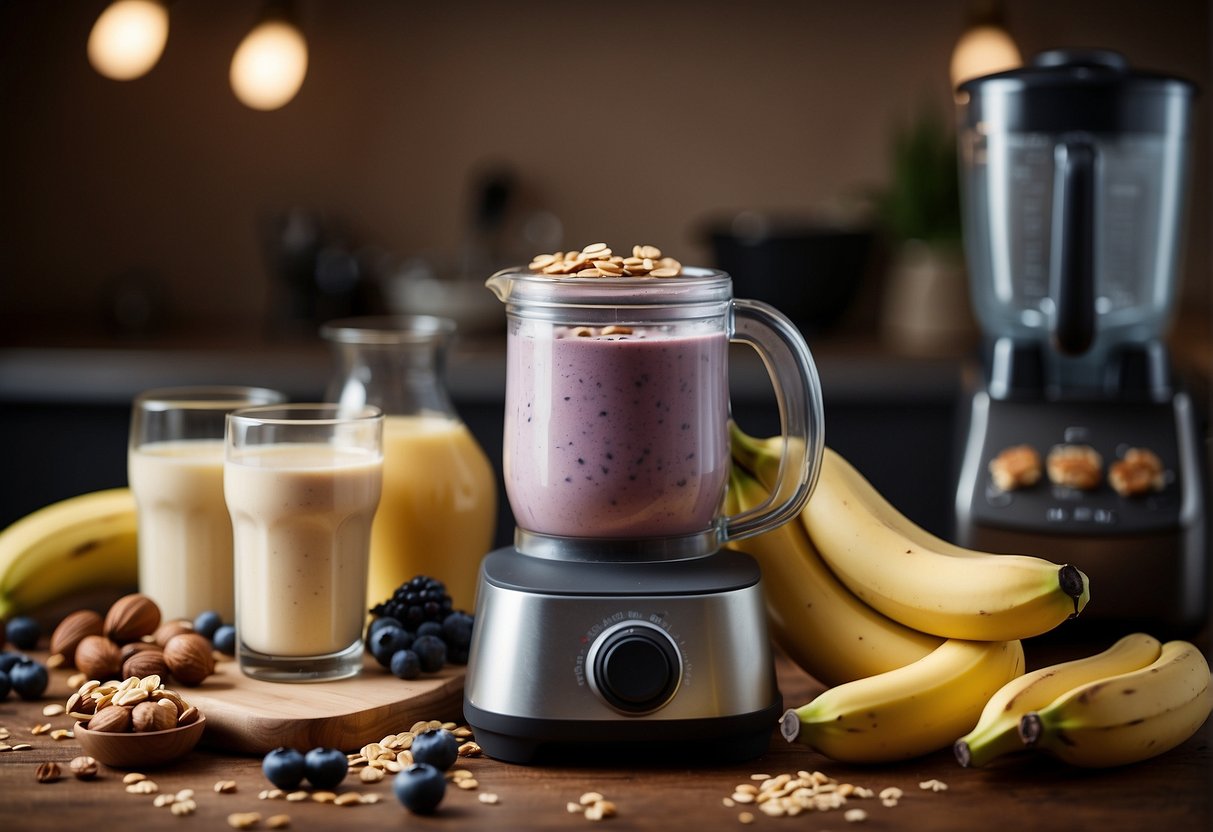
When I’m making smoothies, I aim for that perfect, creamy thickness that’s both satisfying and filling. Here’s how I tweak the texture and ramp up the fullness.
Using Thickeners
To get that rich, satisfying consistency, I love to use thickeners like banana, which adds a creamy body to the smoothie. Avocados are another favorite—they’re not just for guacamole! They blend smoothly and bring in healthy fats that help me feel full longer. If I’m in the mood for something even thicker, Greek yogurt or regular yogurt does the trick, adding a tangy flavor plus a protein boost. Frozen fruits are also a neat trick to thicken the mix while keeping the smoothie cold and refreshing.
Leveraging High-Fiber Additions
Fiber is my secret weapon for a filling smoothie. Chia seeds are fantastic—they have a ton of fiber, and they thicken the smoothie as they swell up. Sometimes, I’ll toss in a handful of oats; they aren’t just for oatmeal! Plus, flax seeds are a good choice for omega-3s and fiber, giving my smoothie a nutritional punch. I find that adding these not only helps keep hunger at bay but also adds interesting texture and layers of flavor.
Boosting Protein Content
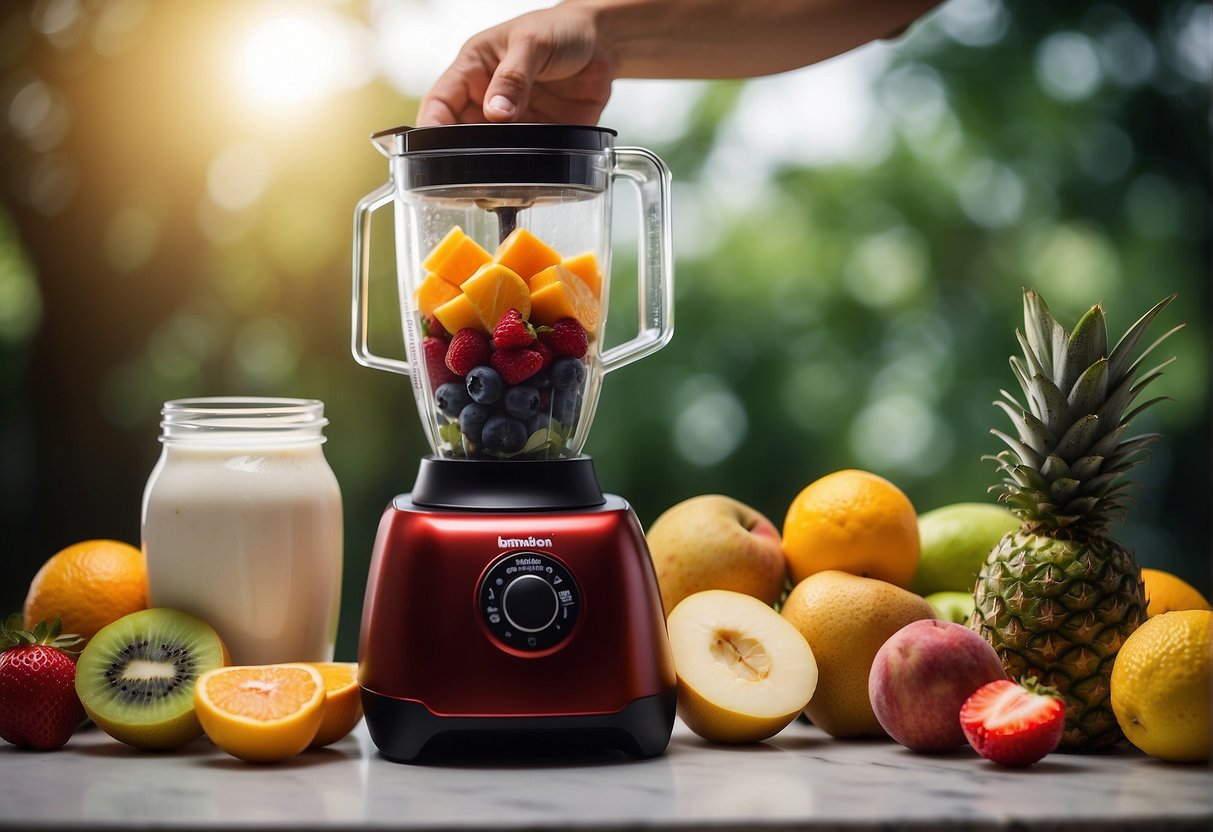
When I’m looking to make my smoothies not just a treat but a true meal replacement, I turn to high-protein ingredients that keep me full longer. Here’s how I up the protein stakes:
Incorporating Protein-Rich Foods
Greek Yogurt
I often toss a scoop of Greek yogurt into my blender—it’s not only creamy, but it also adds a significant protein punch. In fact, Greek yogurt can contain around double the protein of regular yogurt. The tangy taste works really well with fruits like berries and peaches.
Nuts and Seeds
Nuts and seeds are a no-brainer for me. A sprinkle of chia seeds, flaxseeds, or hemp seeds can contribute both protein and essential fatty acids. And let’s not forget about nut butters. A spoonful of almond butter or peanut butter not only adds depth of flavor but also provides extra protein and makes my smoothies delightfully thick.
Legumes
It might sound unconventional, but legumes like lentils and beans are protein powerhouses and can easily be added to smoothies without altering the taste too much. I make sure they’re well-cooked or canned to keep the texture smooth.
Choosing Quality Protein Powders
Types of Protein Powder
The market’s flooded with varieties of protein powder, making it easy to find one that suits my dietary preferences. Whey protein is a staple for many, but plant-based options like soy or pea protein are great for those looking for a vegan-friendly choice.
Pairing with Other Ingredients
It’s essential to find a powder that blends well with the other smoothie ingredients. I always look for one that’s low in added sugars and artificial additives to keep my smoothie as wholesome as possible. A scoop of protein powder can conveniently up my smoothie’s protein content, making it a true meal replacement.
Optimizing Smoothie Nutritional Profile

To ramp up the staying power of my smoothies, I focus on packing them with nutrient-dense ingredients and healthy fats. That way, they’re more than just a drink; they’re a filling meal that keeps me satisfied throughout the day.
Selecting Nutrient-Dense Fruits and Vegetables
When I toss fruits and veggies into my blender, I go for a mix that’s rich in vitamins, minerals, and antioxidants. Berries like blueberries and strawberries are a no-brainer because they’re loaded with flavor and nutrients without being too high in sugar. Mango adds a tropical twist and comes packed with vitamin C. For greens, I always reach for spinach or kale—they blend well and bring a hearty dose of nutrients without overwhelming other flavors. Here’s a quick list of some of my smoothie staples:
- Berries: For a burst of antioxidants.
- Mango: High in vitamins A and C.
- Spinach and Kale: Packed with iron and calcium.
- Other Leafy Greens: A variety of nutrients and a touch of freshness.
Adding Healthy Fats for Satiety
To keep my hunger at bay, I include healthy fats that help regulate the hunger hormone ghrelin and increase the production of the satiety-inducing hormone peptide yy. I tend to add a spoonful of chia or flax seeds, as they are not only rich in omega-3 fatty acids but also give my smoothies a thicker texture. Nuts like almonds or cashews are a great add-in, too, offering both fats and a satisfying crunch if left a bit chunky. Some top picks for my smoothies include:
- Avocado: For creaminess and healthy monounsaturated fats.
- Coconut Oil: A boost of medium-chain triglycerides.
- Hemp Seeds: For a complete protein profile.
- Chia or Flax Seeds: They thicken the smoothie and are a great source of omega-3s.
By choosing the right ingredients for my smoothies, I make sure they’re not just delicious but also nutritionally optimized to keep me full and focused.
Natural Sweeteners and Flavor Boosters

When it comes to making my smoothies both tastier and more satisfying, I love incorporating natural sweeteners and flavor boosters. They don’t just add complexity to the taste, but also bring a range of health benefits.
Choosing Natural Sweeteners for Better Health
I’m careful about my sugar intake and often opt for natural sweeteners like honey, maple syrup, or date paste. Honey provides a floral sweetness that works great with tart berries or citrus fruits. Maple syrup adds a warm, rich taste that’s perfect for autumn-inspired smoothies. For a caramel-like flavor, dates are my go-to sweetener and they’re also packed with fiber, which helps to slow digestion and keep me fuller longer.
Using Spices and Other Flavor Enhancers
To spice up my smoothies without extra calories, I reach for spices like ginger or a dash of cocoa powder. Ginger gives a refreshing kick and is known for its anti-inflammatory properties. Cocoa powder, especially when used without sugar, adds a deep chocolate flavor and is rich in antioxidants. Occasionally, I’ll melt a square of high-quality dark chocolate into my smoothie for a decadent twist that also gives me health benefits, such as improved heart health.
Customizing Smoothie Varieties
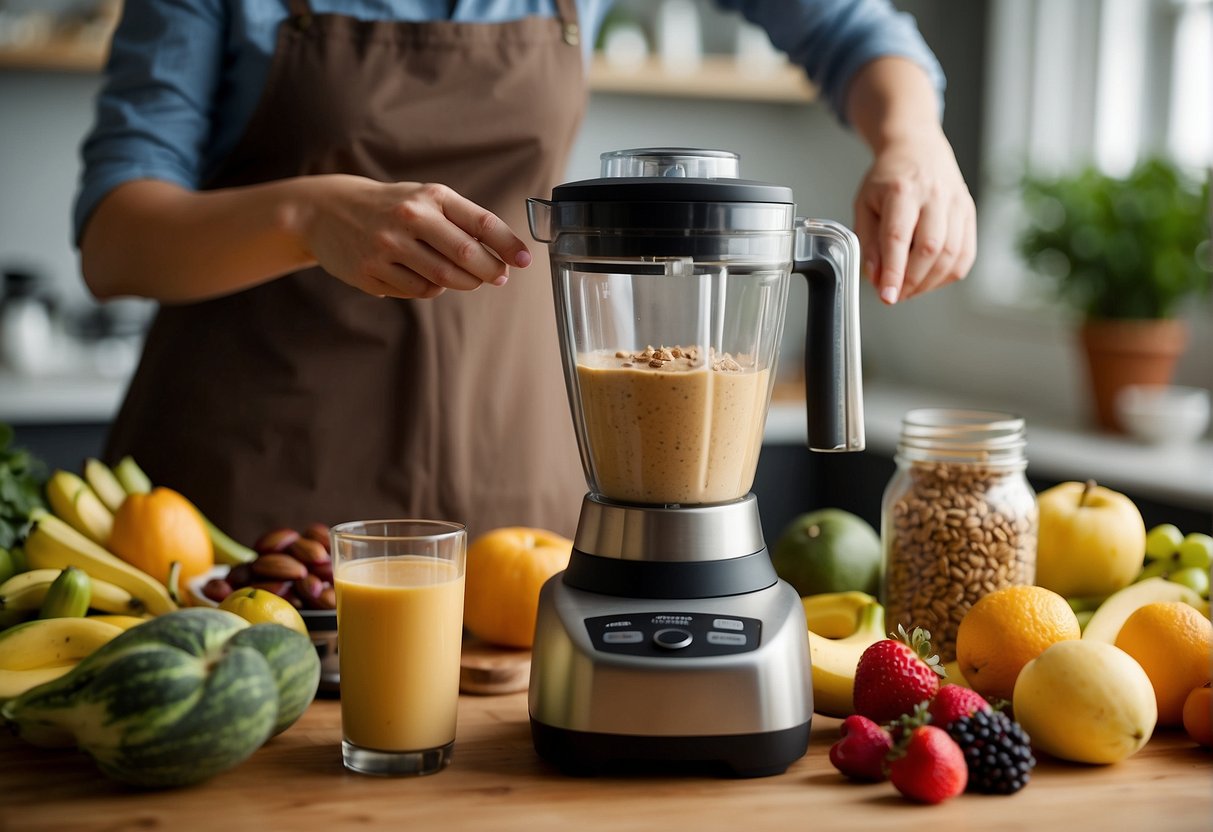
When I’m crafting the perfect smoothie, I focus on flavor variety and nutritional balance to keep things both interesting and satisfying. Whether I’m starting my day, needing a vegan treat, or refueling after a workout, the right combination of ingredients can make all the difference.
Building a Satisfying Breakfast Smoothie
For my breakfast smoothie, I go for ingredients that will keep me full until lunch. Here’s what I typically include:
- Proteins: Greek yogurt or a scoop of protein powder helps ward off hunger pangs.
- Healthy Fats: A spoonful of nut butters or a handful of nuts like almonds for an energy boost.
- Carbs: Oats or a slice of banana give the necessary energy, while adding texture.
- Fiber: I love tossing in some spinach or kale for extra nutrients without compromising taste.
Creating Vegan-Friendly Smoothie Options
My vegan friends really appreciate it when I share my smoothie recipes that are free from animal products but still packed with flavor and substance. Here’s what I might use:
- Plant-Based Milks: Almond, soy, or oat milk are great bases for these smoothies.
- Vegan Proteins: Hemp hearts or pea protein ensure I’m still getting my protein fix.
- Fats and Fibers: Avocado and flaxseeds give that creamy texture and provide healthy fats.
Formulating Post-Workout Smoothie Recipes
After hitting the gym, I make sure my smoothie is stacked with protein to aid muscle recovery. Here’s what makes the cut:
- Protein-Rich Bases: Low-fat milk or a protein-rich almond milk kick-start recovery.
- Fruits: Berries or cherries offer natural sugars for a quick energy restore.
- Extra Nutrition: A blend of seeds like chia or chia seeds for added omega-3s and fiber.
Each of these smoothies can be served in a glass or bowl with toppings like granola or fruit slices for an extra crunch and burst of flavor.
Understanding the Psychological Impact of Fullness
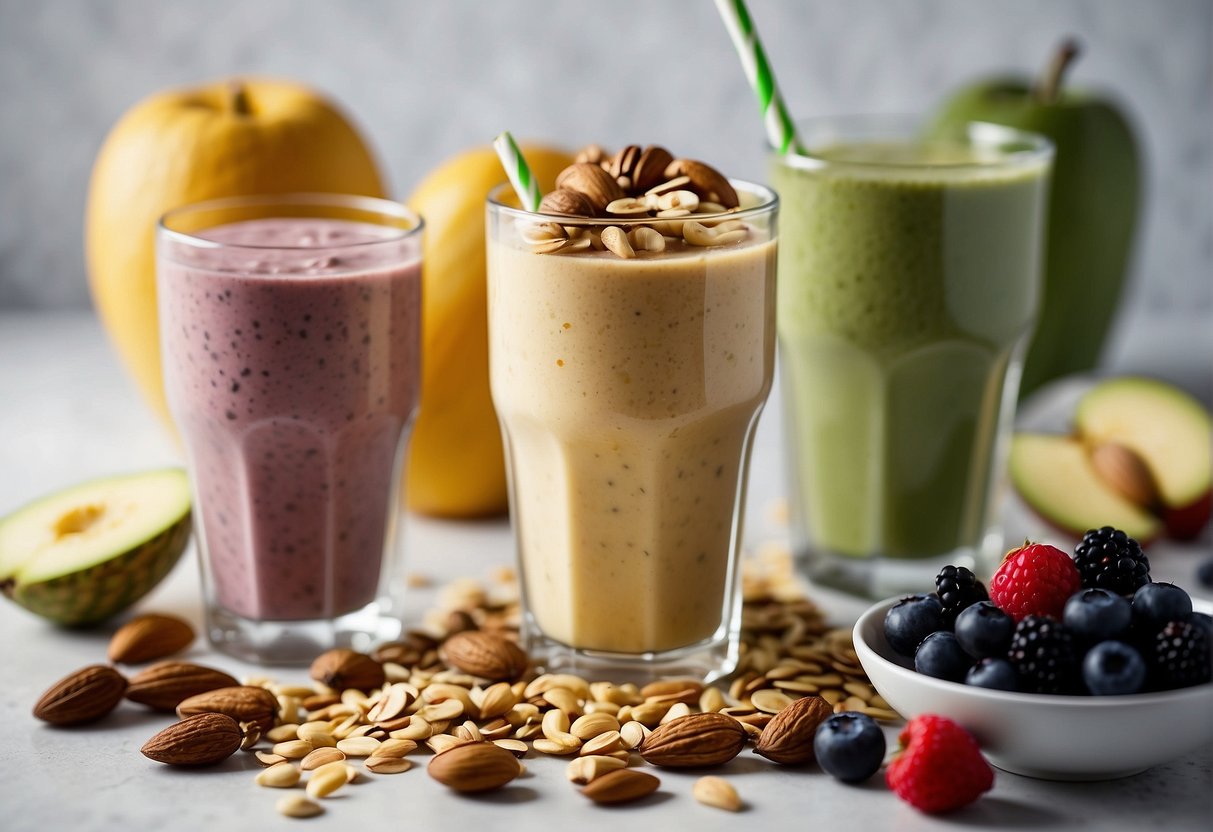
When I talk about making a smoothie more filling, I’m really addressing how it can affect my feelings of fullness both physically and psychologically. Let’s dive into how tweaking the ingredients, specifically fiber and protein, can alter my hunger signals.
How Fiber and Protein Affect Hunger Signals
Fiber is my go-to when I want to feel full for longer after drinking a smoothie. It’s not just filling up space in my stomach; fiber actually slows down the digestion process, which keeps me from feeling hungry again too quickly. Plus, fiber-rich ingredients tend to require more chewing – even if they’re blended – and that act of chewing itself sends signals to my brain that I’ve eaten something substantial.
Then there’s protein, my mighty hunger-buster. It’s well known for its role in satiety, and for a good reason. Including protein in my smoothie can help decrease the hunger hormone, ghrelin, and boost levels of peptide YY – a hormone that tells my brain, “Hey, I’m full here!” So whenever I add a scoop of protein powder or a dollop of Greek yogurt to my blend, I’m not just upping the nutrition; I’m setting myself up for hours of sustained energy and fullness.
Intentionally choosing ingredients that are high in fiber and protein has a notable psychological payoff – I’m less likely to reach for snacks soon after sipping on my smoothie, which helps me stick to my eating plan and avoid that irksome cycle of hunger and snacking. Plus, I feel pretty proud of myself for crafting a beverage that’s as satisfying as it is nutritious – and that’s a mental win in my book!
Practical Tips for a Filling Smoothie
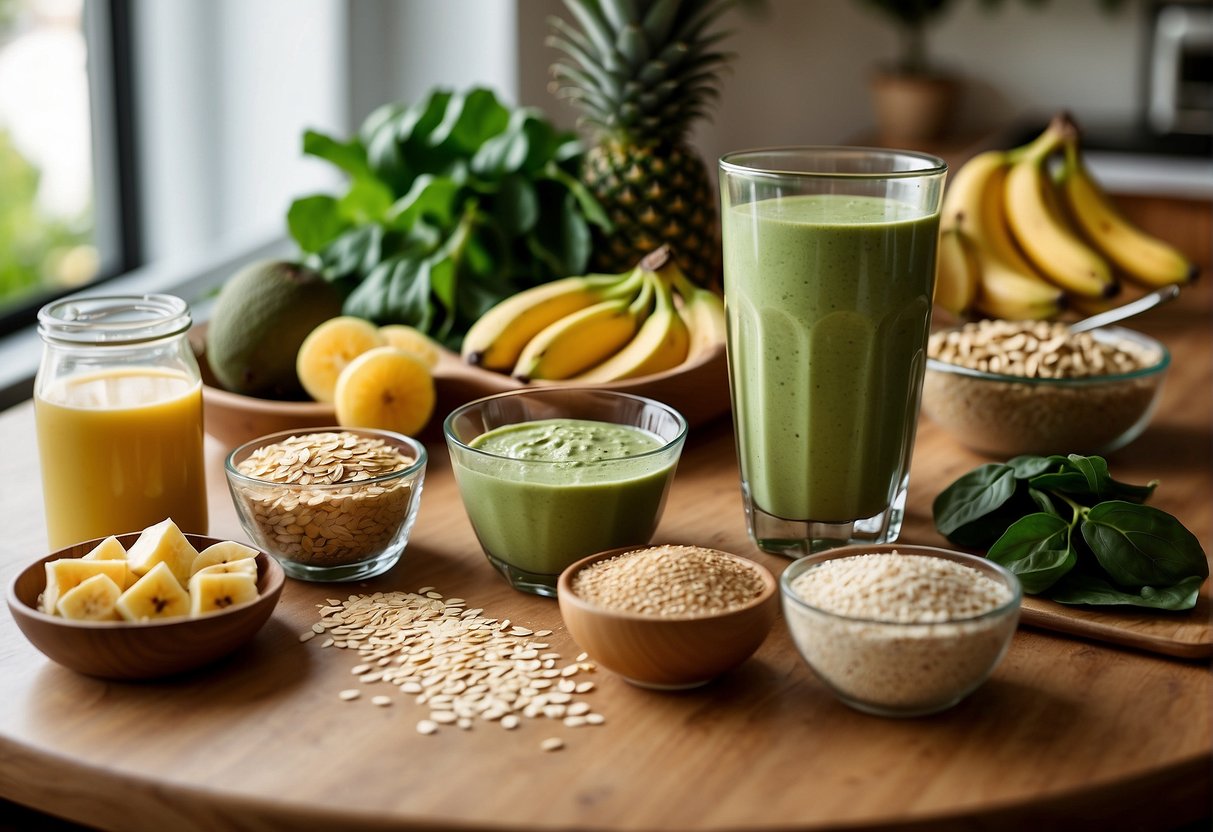
When I blend up a smoothie, I aim for that sweet spot where taste meets satiation. I focus on ingredients that will keep me full longer and avoid that mid-morning hunger pang.
Balancing Sweetness and Nutrition
In my quest for a filling smoothie, I’ve learned the importance of balancing sweetness with nutrition. I use fruits that are naturally sweet to minimize added sugars, while I also pack my smoothies with high fiber items. For instance, instead of just bananas, I’ll throw in some apple slices with the peel for extra fiber. And if I’m craving something even sweeter, I’ll opt for a spoonful of honey or some dates, which adds sweetness and also fiber.
Sometimes, I’ll infuse my smoothies with veggies; a fistful of spinach or kale can go unnoticed but ramps up the nutritional value. If I’m after a creamier texture and a bit more staying power, I’ll add a scoop of nut butter or some Greek yogurt, which is capable of providing both protein and probiotics without overwhelming sweetness.
Adjusting Quantity and Frequency
My dietary needs don’t always require me to have a full meal in a glass, which is where adjusting the quantity of my smoothie becomes key. If it’s just a snack or a small breakfast I need, I’ll use less liquid and maybe half a banana to keep the volume down. On days when I need more sustenance, I’ll double up on the ingredients, particularly those that are high in fiber like whole grains—oats are a great choice.
I’ve also found that it’s not just about how much I consume in one sitting, but how often. I listen to my body and if I get hungry quickly, I’ll add more bulk to my smoothie next time or prepare a smaller, second serving to have mid-morning which ensures I’m fueled throughout the day without overloading myself all at once.
Essential Equipment for Perfect Smoothies
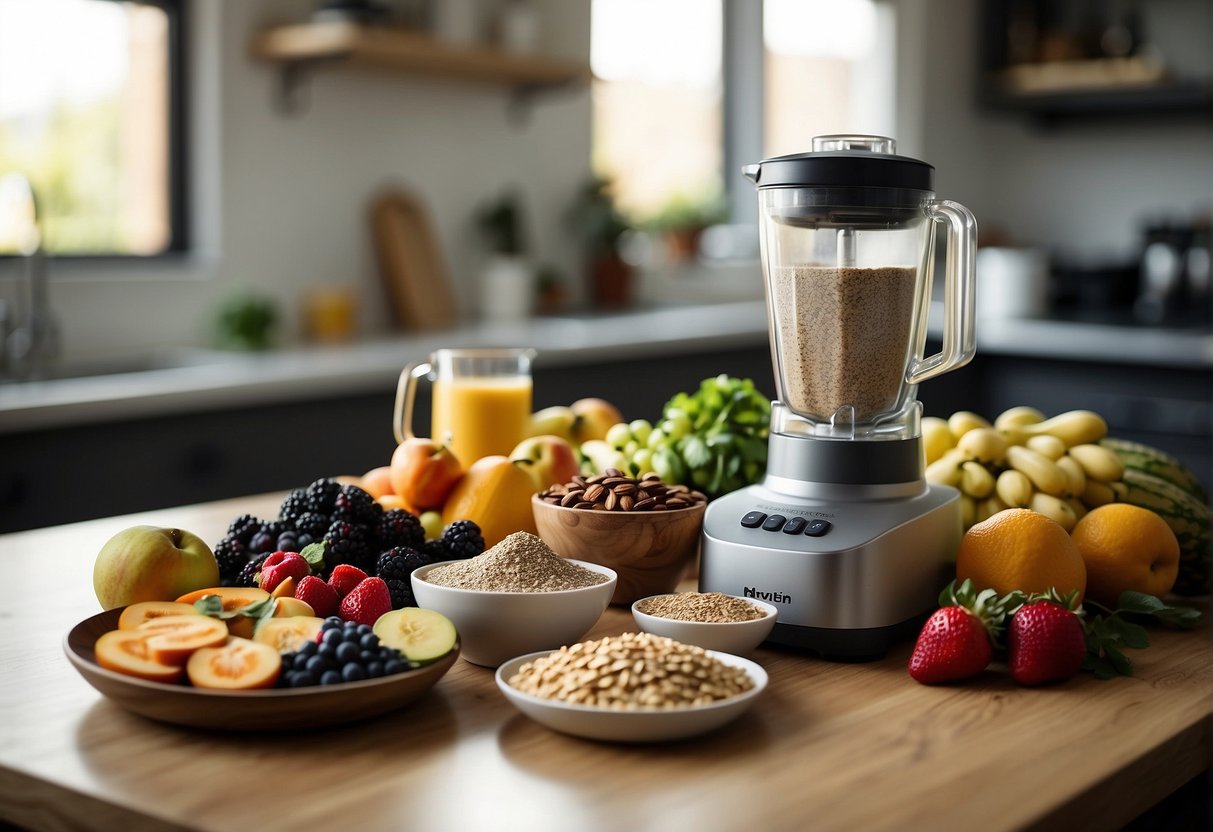
When I make smoothies, the cornerstone of the whole operation is, no doubt, a solid blender. Ideally, you want something powerful enough to handle ice and frozen fruits, which are the backbone of a creamy, thick smoothie with just the right consistency. Personally, I look for blenders with multiple speed settings to fine-tune the texture.
Now, here’s the thing: before you toss in your ingredients, you’ll want to have the right containers on hand. I’m all about those trusty shaker bottles for on-the-go sipping, but if I’m serving friends, I reach for some nice glasses to show off the smoothie’s vibrant color.
Let’s not forget about measuring cups and spoons. Get a set if you don’t have one, because getting your ingredient ratios spot-on makes a difference in flavor and nutrition.
| Equipment | Use |
|---|---|
| High-Speed Blender | Blends ingredients to perfect consistency |
| Shaker Bottles/Glasses | For serving and sipping on the move |
| Measuring Tools | Ensures accurate ingredient portions |
If you’re into smoothie bowls, a silicone spatula will be your best friend to scrape out every delicious bit.
And lastly, I always say invest in a good cleaning brush. If your blender gives you a hard time with leftovers stuck under the blade, a brush can save your day—and your smoothie experience!
Remember, the right tools make all the difference in achieving that satisfyingly thick, spoonable, or drinkable smoothie that won’t leave you hungry an hour later.
Frequently Asked Questions
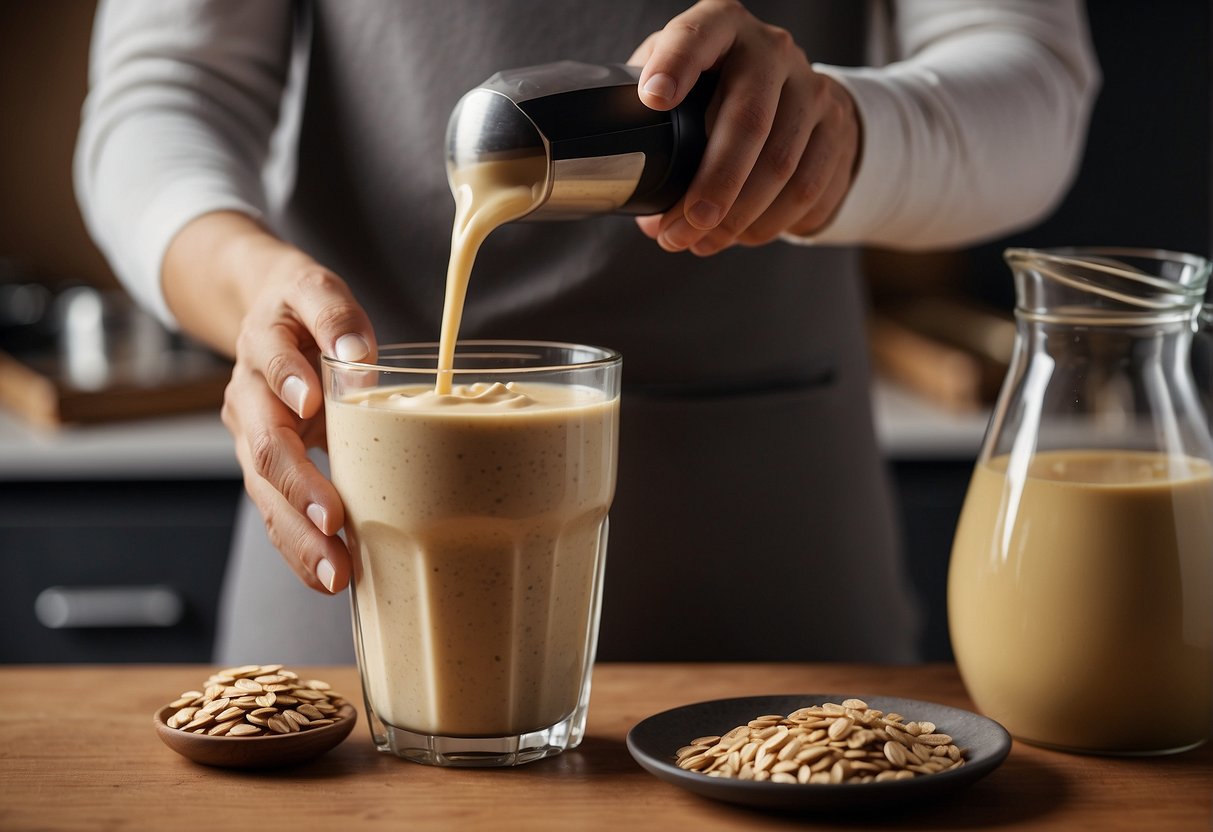
Making smoothies that keep you full and satisfied is all about the right ingredients. I’ll share some tips and tricks I’ve learned for turning that quick drink into a meal that sticks with you.
What ingredients can turn a smoothie into a satisfying meal replacement?
I’ve found that including a good balance of protein, healthy fats, and carbohydrates can turn a smoothie into a meal replacement. Ingredients like Greek yogurt and rolled oats add protein and fiber, while avocado brings in healthy fats.
Which foods can I add to breakfast smoothies to stay full longer?
To stay full longer, I add foods that are high in fiber and protein. Chia seeds or flaxseeds add fiber, which helps to keep me full, and nut butters like almond butter are great for a protein boost.
Are there any tricks to bulk up smoothies for weight loss without using protein powder?
Absolutely, to bulk up smoothies without protein powder, I rely on whole food sources of protein such as tofu or cottage cheese. I also love throwing in veggies like spinach or kale for low-calorie bulk.
What are some high-fiber add-ins for a more substantial smoothie experience?
For a high-fiber boost, I’ll add fruits with the skin on, such as apples or pears. I also use ingredients that add fiber like beet greens and carrots for added nutrients and fiber.
Can you recommend any natural thickeners for a smoother, denser smoothie texture?
Certainly! For a naturally thicker texture, frozen bananas or mangoes work wonders. I also add a spoonful of oats or cooked quinoa, which not only thickens the texture but also gives my smoothie a nutritional lift.
Why might a smoothie leave me feeling hungry, and how can I avoid that?
Sometimes a smoothie leaves me feeling hungry if it’s too high in simple sugars and low in fiber, protein, and fat. To avoid that, I make sure every smoothie has a good mix of these satisfying elements. Adding ingredients like fiber can make a smoothie more fulfilling and help stave off hunger pangs.
